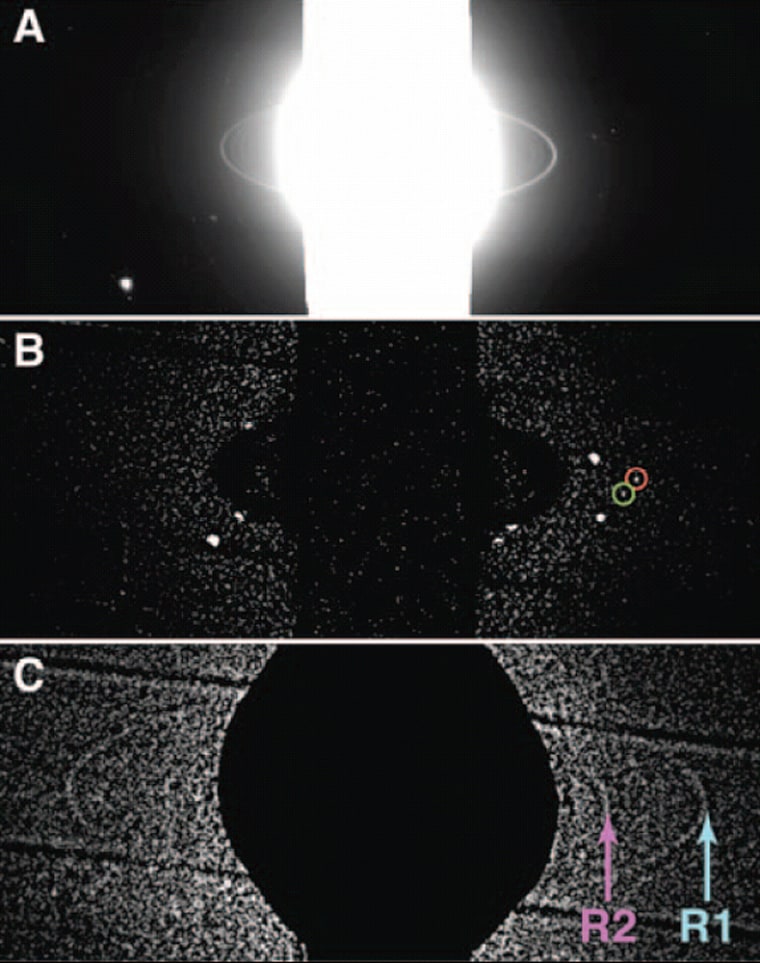Astronomers have discovered new rings and small moons around Uranus and found surprising changes in satellite orbits around the giant planet.
NASA's Hubble Space Telescope photographed a pair of previously unknown rings. The largest is twice the diameter of the planet's previously known rings. The new rings are so far from the planet that they are being called Uranus's "second ring system."
Hubble also spotted two small satellites. One shares its orbit with one of the newly discovered rings. Most surprisingly, the orbits of Uranus's family of inner moons have changed significantly in the last decade, the new data reveal.
Collectively, the discoveries mean Uranus has a densely packed, rapidly changing, and possibly unstable dynamical system of orbiting bodies.
"The new discoveries dramatically demonstrate that Uranus has a youthful and dynamic system of rings and moons," says Mark Showalter of the SETI Institute. "Until now nobody had a clue the rings were there, we had no right to expect them."
Since dust in such an orbit is expected to be depleted by spiraling away, the rings must be continually replenished with fresh material. Showalter and collaborator Jack Lissauer of the NASA Ames Research Center propose that the outermost ring is replenished by a 12-mile-wide companion satellite, named Mab, which they first saw in 2003 using Hubble. Meteoroid impacts continually blast dust off the surface of Mab, and the dust then spreads out into a ring around Uranus.
Other small moons are linked to rings, including Amalthea at Jupiter, Pan at Saturn, and Galatea at Neptune.
Mab's ring receives a fresh infusion of dust from each impact. In this way, nature "balances the books" by keeping the ring supplied with new dust while older dust spirals away or bangs back into the moon, the thinking goes.
Showalter and Lissauer have measured numerous changes to the orbits of Uranus's inner moons since 1994.
“This appears to be a random or chaotic process, where there is a continual exchange of energy and angular momentum between the moons," Lissauer said. "The changes in the last ten years are small, but the thing about chaos is that small changes build up exponentially with time. As a result, this suggests that the entire system is orbitally unstable."
The moons may begin to collide in a few million years, Lissauer figures.
Perhaps the most unstable moon of all is tiny Cupid, whose orbit brings it within 500 miles of the moon Belinda.
Showalter and Lissauer propose that their discovery of a second ring, which orbits closer to the planet than the new outermost ring, provides further evidence for collisional evolution of the system. This ring orbits in the midst of the moons but has no visible body to re-supply it with dust.
"This ring may be the telltale sign of an unseen belt of bodies a few feet to a few miles in size," Showalter said. He proposes that the collisional disruption of a moon in Uranus's past could have produced the debris ring they now observe.
